Related Research Articles
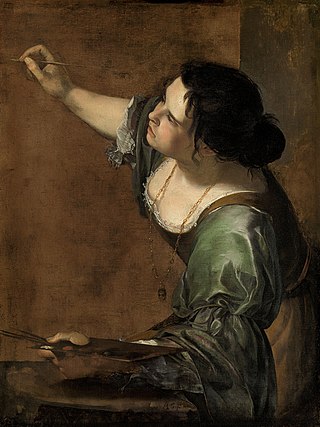
Artemisia Lomi or Artemisia Gentileschi was an Italian Baroque painter. Gentileschi is considered among the most accomplished seventeenth-century artists, initially working in the style of Caravaggio. She was producing professional work by the age of 15. In an era when women had few opportunities to pursue artistic training or work as professional artists, Gentileschi was the first woman to become a member of the Accademia di Arte del Disegno in Florence and she had an international clientele.

Nancy Spero was an American visual artist. Born in Cleveland, Ohio, Spero lived for much of her life in New York City. She married and collaborated with artist Leon Golub. As both artist and activist, Nancy Spero had a career that spanned fifty years. She is known for her continuous engagement with contemporary political, social, and cultural concerns. Spero chronicled wars and apocalyptic violence as well as articulating visions of ecstatic rebirth and the celebratory cycles of life. Her complex network of collective and individual voices was a catalyst for the creation of her figurative lexicon representing women from prehistory to the present in such epic-scale paintings and collage on paper as Torture of Women (1976), Notes in Time on Women (1979) and The First Language (1981). In 2010, Notes in Time was posthumously reanimated as a digital scroll in the online magazine Triple Canopy. Spero has had a number of retrospective exhibitions at major museums.
Harmony Hammond is an American artist, activist, curator, and writer. She was a prominent figure in the founding of the feminist art movement in 1970s New York.
Cynthia Carlson is an American visual artist, living and working in New York.
Michiko Itatani is a Chicago-based artist who was born in Osaka, Japan. After she received her BFA (1974) and MFA (1976) at the School of the Art Institute of Chicago in 1974 and 1976 respectively, she returned to her alma mater in 1979 to teach in the Painting and Drawing department. Through her work, Itatani explores identity, continuation, and finding one's way in the modern world. Her work depicts nude figures in an expressionist style. Itatani has received the Illinois Arts Council Artist's Fellowship, the National Endowment for the Arts Fellowship and the John Simon Guggenheim Fellowship. Her work is collected in many museums, including the Museum of Contemporary Art, Olympic Museum, Switzerland; Villa Haiss Museum, Germany; Musée national des beaux-arts du Québec, Canada; Museu D'art Contemporani (MACBA), Spain; and the National Museum of Contemporary Art, South Korea.
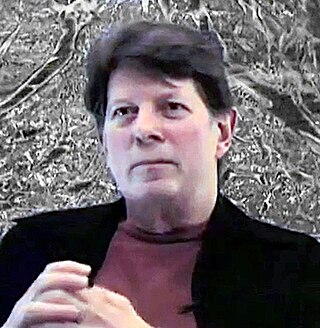
Thomas Kovachevich is an American contemporary visual artist and physician. Kovachevich's art practice is multi-faceted; exhibitions of paintings, sculptures, installations and performances have represented the lexicon of this artist.

Jael and Sisera is a painting by the Italian Baroque artist Artemisia Gentileschi, executed around 1620.
Margaret Wharton (1943-2014) was an American artist, known for her sculptures of deconstructed chairs. She deconstructed, reconstructed and reimagined everyday objects to make works of art that could be whimsical, witty or simply thought-provoking in reflecting her vision of the world.

Corey Postiglione is an American artist, art critic and educator. He is a member of the American Abstract Artists in New York, and known for precise, often minimalist work that "both spans and explores the collective passage from modernism to postmodernism" in contemporary art practice and theory. New Art Examiner co-founder Jane Allen, writing in 1976, described him as "an important influence on the development of contemporary Chicago abstraction." In 2008, Chicago Tribuneart critic Alan G. Artner wrote "Postiglione has created a strong, consistent body of work that developed in cycles, now edging closer to representation, now moving further away, but remaining rigorous in approach to form as well as seductive in markmaking and color."
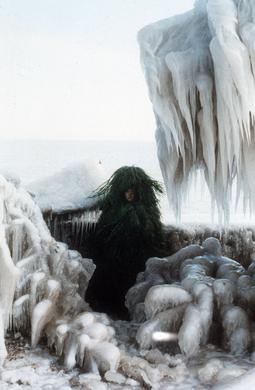
Fern Shaffer is an American painter, performance artist, lecturer and environmental advocate. Her work arose in conjunction with an emerging Ecofeminism movement that brought together environmentalism, feminist values and spirituality to address shared concern for the Earth and all forms of life. She first gained widespread recognition for a four-part, shamanistic performance cycle, created in collaboration with photographer Othello Anderson in 1985. Writer and critic Suzi Gablik praised their work for its rejection of the technocratic, rationalizing mindset of modernity, in favor of communion with magic, the mysterious and primordial, and the soul. Gablik featured Shaffer's Winter Solstice (1985) as the cover art for her influential book, The Reenchantment of Art, and wrote that the ritual opened "a lost sense of oneness with nature and an acute awareness of ecosystem" that offered "a possible basis for reharmonizing our out-of-balance relationship with nature."
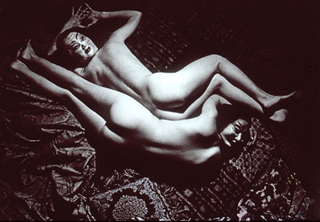
Carole Harmel is an American artist and photographer, who gained recognition for her provocative images of nudes in the 1970s and 1980s and still lifes combining photography with short narratives, wordplay and mixed media. Fundamental to Harmel's work is a questioning of reality and photographic conventions, a penchant for surrealism, and humor. The New Art Examiner described her nudes as having a "startling, queasy impact," "rich in ambiguity, discomforting in content." About her still lifes, critic Michael Weinstein wrote, "sophisticated academic criticism is fused with love of color and visual form to create images at once conceptually engaging and perceptually arresting."

Don Baum was an American curator, artist and educator, most known as a key impresario and promoter of the Chicago Imagists, a group of artists that had an enduring impact on American art in the later twentieth century. Described by the Museum of Contemporary Art, Chicago (MCA) as "an indispensable curator of the Chicago school," Baum was known for lively and irreverent exhibitions that offered fresh perspectives combining elements of Surrealism and Pop and that broke down barriers between schooled and untrained, or so-called outsider artists. From 1956 to 1972, Baum was exhibitions director at Chicago's Hyde Park Art Center. It was there, in the 1960s, that he became involved with a group of young artists he exhibited as "Hairy Who" that later expanded to become the Chicago Imagists. That group included Ed Paschke, Jim Nutt, Roger Brown, Gladys Nilsson, and Karl Wirsum. Baum mounted two major shows at the MCA that featured the emerging artists in their first museum exhibitions: "Don Baum Sez: 'Chicago Needs Famous Artists'" (1969) and "Made in Chicago" (1973), which shaped a vision of Chicago's art world as a place of meticulous craftsmanship and vernacular inspiration.

Rodney Carswell is an American abstract artist. He first gained recognition for human-scaled, geometric paintings that feature exposed, projected support structures, creating interplay between sculptural presence and richly painted pictorial surfaces. His recent paintings eschew the superstructures and evoke a greater sense of immediacy, playfulness, and narrative. Critics often describe Carswell's work as uncanny, elusive or quirky, for its tendency to negotiate "in-between" spaces and embrace contradictions such as order and instability, intention and accident, or back and front. Employing irregularly shaped canvasses, thick supports, and openings or holes that reveal the stretcher construction and walls behind them, works like 3 (1994) often occupy a place between painting and sculpture. In a similar way, Carswell uses the modernist languages of Minimalism, Suprematism and Constructivism, yet eludes those categories with postmodern allusions to architecture, the body and spiritual iconography, and with his process-oriented, "hand-made" surfaces. In his essay for Carswell's mid-career retrospective at Chicago's Renaissance Society, Los Angeles Times critic David Pagel suggested that his understated paintings worked their way into the one's consciousness in a "supple, somewhat unsettling manner" that achieves a subtle, but lingering shift in perception.
Jan Cicero Gallery was a contemporary art gallery founded and directed by Jan Cicero, which operated from 1974 to 2003, with locations in Evanston and Chicago, Illinois and Telluride, Colorado. The gallery was noted for its early, exclusive focus on Chicago abstract artists at a time when they were largely neglected, its role in introducing Native American artists to mainstream art venues beyond the Southwest, and its showcasing of late-career and young women artists. The gallery focused on painting, and to a lesser degree, works on paper, often running counter to the city's prevailing art currents. It was also notable as a pioneer of two burgeoning Chicago gallery districts, the West Hubbard Street alternative corridor of the 1970s, and the River North district in the 1980s.
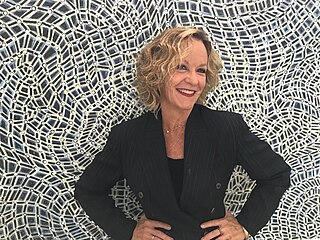
Susan Sensemann is an American artist, educator and arts administrator, best known for her detailed, largely abstract patterned paintings and photomontages reflecting gothic, baroque, spiritual and feminist sensibilities. She has exhibited her work at venues including the Art Institute of Chicago, A.I.R., The Living Art Museum (Reykjavík), Indianapolis Art Center, Chicago Cultural Center, and Art Institute of Boston, on four continents. Her work has been widely reviewed and resides in numerous private, university and corporate collections. Sensemann is known as a versatile and prolific creator, whose ideas have led her to explore diverse painting materials, media, subject matter, and styles from abstraction to realism. Critics note her work's densely packed compositions, shallow fields of oscillating space, complex tactile surfaces, and sensuous color and linearity. James Yood wrote that Sensemann's abstract paintings were "fraught with meaning, charged with value, and seething with import" in their spiritual seeking. Art historian Leisa Rundquist described her photomontage self-portraits as "strangely sensual, yet disturbing" images drawn from "the depths of the unconscious."
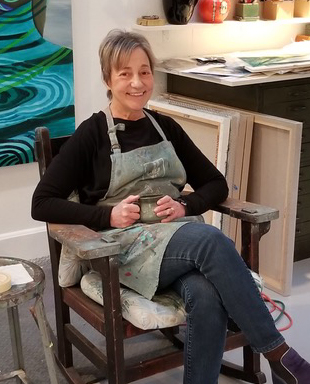
Barbara Grad is an American artist and educator, known for abstract, fractured landscape paintings, which combine organic and geometric forms, colliding planes and patterns, and multiple perspectives. Her work's themes include the instability of experience, the ephemerality of nature, and the complexity of navigating cultural environments in flux. While best known as a painter, Grad also produces drawings, prints, mixed-media works and artist books. She has exhibited in venues including the Art Institute of Chicago, Kemper Museum of Contemporary Art, Danforth Art, Rose Art Museum, Indianapolis Museum of Art and A.I.R., and been reviewed in publications, including Artforum, Arts Magazine and ARTnews. Grad co-founded Artemisia Gallery, one the country's first women-artist collectives, in Chicago in 1973. She has been an educator for over four decades, most notably at the Massachusetts College of Art and Design. Grad has been based in the Boston area since 1987.
Artemisia Gallery was an alternative exhibition space in Chicago, Illinois, United States, that operated from 1973 until its closure in 2003.
ARC Gallery is an alternative exhibition space in Chicago, Illinois. Opening in 1973, it was one of the first women artists’ cooperatives in the Midwest along with Artemisia Gallery. ARC stands for Artists, Residents, Chicago and is one of the longest running women’s cooperative galleries in the country. The original members, recent art school graduates, banded together because they found few female mentors and exhibition opportunities. Through ARC, the members were able to promote their own artwork, feature solo and group exhibitions by many artists from across the county, and create discourse around feminism, art, theory, and practice. In 1979, ARC founded RAWspace, a raw part of the gallery dedicated to exhibiting installation work by visiting artists, selected by ARC members. RAWspace was one of the pioneering spaces in Chicago for the exhibition of installation work.
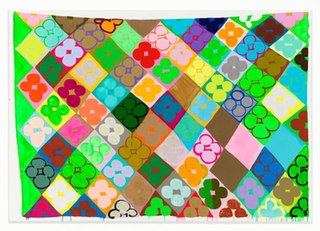
Judy Ledgerwood is an American abstract painter and educator, who has been based in Chicago. Her work confronts fundamental, historical and contemporary issues in abstract painting within a largely high-modernist vocabulary that she often complicates and subverts. Ledgerwood stages traditionally feminine-coded elements—cosmetic and décor-related colors, references to ornamental and craft traditions—on a scale associated with so-called "heroic" abstraction; critics suggest her work enacts an upending or "domestication" of modernist male authority that opens the tradition to allusions to female sexuality, design, glamour and pop culture. Critic John Yau writes, "In Ledgerwood’s paintings the viewer encounters elements of humor, instances of surprise, celebrations of female sexuality, forms of vulgar tactility, and intense and unpredictable combinations of color. There is nothing formulaic about her approach."

Sue Hettmansperger is an American artist known for paintings and collages that work across the spectrum of modernist abstraction and representational imagery. Her work explores the interconnectedness of human, botanical and inorganic systems, scientific concepts and ecological concerns. She has been awarded Guggenheim and National Endowment for the Arts fellowships and her work belongs to the public collections of the Metropolitan Museum of Art, Art Institute of Chicago and Des Moines Art Center, among other institutions. She lives and works in Iowa City and is Professor Emerita of Art at the University of Iowa.
References
- 1 2 Taylor, Sue (October 2, 1986). "Michod Showcases Range of Techniques". Chicago Sun-Times.
- ↑ "ARC and Artemisia Galleries: Women Artists' Cooperatives in Chicago".
- ↑ Seaman, Donna (February 28, 1999). "A Collaborative Art: For 25 Years, Artemisia Has Let Women Artists Display Both Their Solo Works And Their Community Spirit". Chicago Tribune.
- 1 2 Kirshner, Judith Russi (March 1983). "Susan Michod, Jan Cicero Gallery". Artforum.
- ↑ Perreault, John (November 1977). "Pattern Painting". Artforum.
- ↑ Artner, Alan (August 21, 1997). "Michod's Work Can Be Judged On Its Merits". Chicago Tribune.